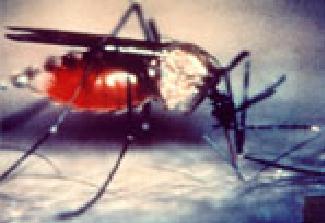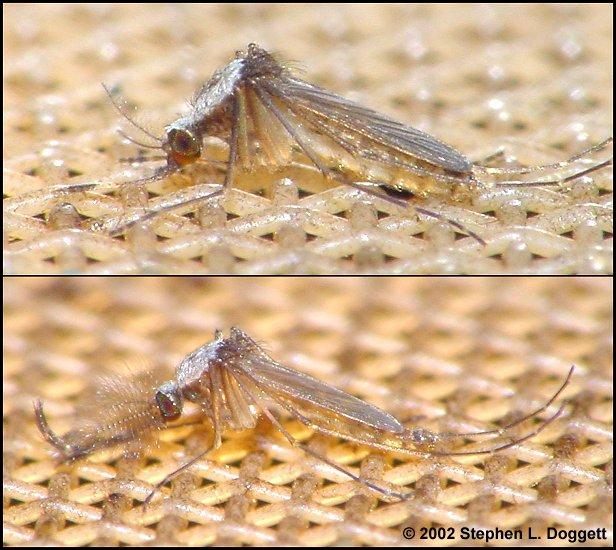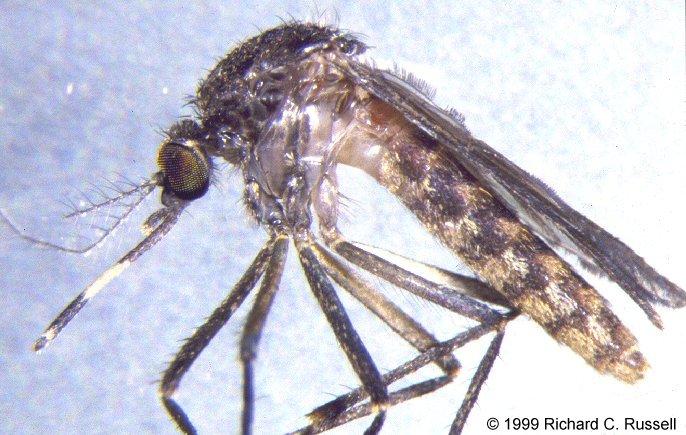JE Vectors
Culex vishnui Sub group:
This group contains three important JE vectors. C. tritinorhynchus is extremely common and widespread. It has been incriminated as a major vector in India, Srilanka, Thailand, Sarawak, and outside the region Japan, Korea, and Thaiwan.C. vishnui is also extremely common and is known to be a vector in India, Thailand, and Thaiwan. C. pseudovishnui has been implecated in southern India and Srilanka.

The role of the laterto species in the transmission of JE virus in other countries of Southeast Asia has not been established, partly because of the difficulty of telling them apart as adult females. C. vishnui is a very variable species and is present from the North-west Frontier to Assam and Burma, through Peninsular India to Ceylon. It is less common at high elevations and in western Himalayas at altitudes of over 5,000ft it is usually replaced by barraudi, and in parts of the Assam hills by whitei. Its range extends from Mesopotamia to China and Japan, and through out the oriental region as far southeast as New Guinea. The larvae are found in ground pools of every description, rice fields, salt marshes, etc.
Culex fuscocephala, Theobald, 1901:
This species is an efficient vector of JE in Thailand. Isolations from wild-caught mosquitoes have been made from that country and in India and Srilanka.
Culex whitmorei, Giles, 1904:
Although this was not recorded from India before about 1923, it is widely spread and common from the Punjab to Assam and Burma, and through the peninsular India to Ceylon. It has been found up to 7,500 ft in the Niligiri hills, South India. Known also from Malay peninsular and Archipelago, Philippines, West China and Japan. Culex adult is rather a small mosquito with white scaling over larger part of the mesonotum. Resembles gelidus. Wing about 3-5mm.

Culex gelidus Theobald, 1901:
C. gelidus common over the larger part of the Indian region from Punjab to Assam and Burma, and southwards to Ceylon. Also found in Malay Peninsula, many of the islands of the Dutch East Indies and Philippines, Siam, Cochin, China and Formosa. The larvae are found in ground-pools, usually those containing much weed, marshy tracts, etc.
Culex bitaeniorhyncus , Giles, 1901:

C. bitaeniorhyncus is one of the commonest mosquitoes over the whole of the Indian region. Its range extends from Africa, through the oriental region, to Japan and Australia. The larvae are commonly found in open weedy pools. The larvae usually feed amongst green algae, which it resembles in color. Adults are recognized by the speckled wings, banded proboscis, and apical yellow bands on abdominal tergites. Wing about 5 mm.
Mansonia annulifera, Theobald, 1901:
Almost noting is known about the binomics of M. annulifera adults. They are known to be strongly anthropophilic. The siphon of this and other Mansonia larvae is specially adapted for puncturing under water stems of aquatic plants. Larvae obtain oxygen for respiration from the air passages of these submerged plant tissues. Larvae are found mostly in ponds, pools, backwaters, and marshes that favor the growth of Pistia species and Eichhornia species.
Anopheles subpictus, Grassi, 1899:
Although normally domestic, A.subpictus is both zoophilic and anthropophilic in Indochina, where studies have revealed as few as 2% of wild-caught females with human blood. Adults are repeatedly encountered in large numbers in all kinds of buildings. Larvae live in many different types of locations containing fresh, brackish, or polluted water. The breeding places may be borrow pits, buffalo wallows, brick pits, drains, pools from leaks in irrigation ditches, furrows in gardens or fields, roof gutters, rice fields, irrigation channels, and artificial containers. In the Sunda Islands, especially Celebes, larvae also breed in brackish water of lagoons and fishponds, with salt concentrations of up to 8.5gm per litre. Larvae have been taken many times from brackish water in Indochina. In Malaya females most commonly oviposit in fresh and brackish water in pools, ponds, and open swamps. Larvae are rarely found in rice fields.
The habitat of A.subpictus is primarily in coastal and low land areas. In Punjab of India the species is found only during and following the monsoon season, where it first appears in June and is prevalent from July to December. In southern India and Burma it breeds through out the year.
Anopheles barbirostris, Van der Wulp, 1884:
Over most of its range, including India, barbirostris is principally zoophilic, but it becomes more domestic farther east. In Celebes it enters houses in large numbers for blood meals, leaving soon after feeding. However, in Indochina a very low percentage of females contains human blood, and in localities in Malaya where livestock is present, more mosquitoes appear to have fed on cattle than on humans. Resting adults are found along the undercut banks of streams, sides of shaded stonewalls, and under uninhabited buildings. The adults fly on cloudy days or in the jungle shade. In the Philippines a flight range of approximately 1,300-1,970 feet has been observed.
Larvae most commonly found in the shaded, clear water of streams, rivers, large vegetated ponds, flowing irrigation ditches and canals, borrow pits, wells, and even in stagnant collections of water. Clear, fresh water is preferred. Rice fields are common breeding sites in Malaya. In India the larvae are found at vegetated margins of lakes, swamps and sluggish rivers. In Indonesia, they live in exposed or shaded, turbid and stagnant locations from the coast to high altitudes, and in the Philippines they have occasionally been taken from salt marshes.